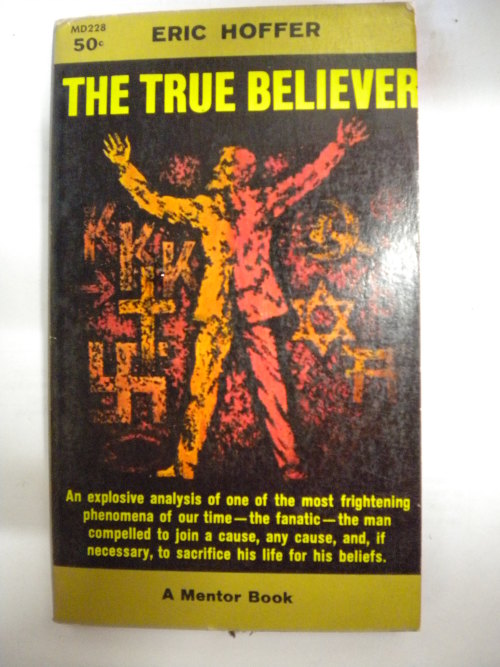

Chapters 15-17 focus on the beginning, active, and end phases of a movement. In 1983, President Ronald Reagan conferred on Hoffer the Presidential Medal of Freedom.įinally, Part 4 examines a mass movement’s life cycle and then concludes with thoughts on how to mitigate a mass movement’s worst effects. The True Believer was a critical success upon publication and has remained a famous work on the nature and psychology of mass movements ever since. Furthermore, the precise nature of the mass movement-its doctrines, objectives, and programs-means little compared to its ability to attract and mold fanatics by offering them refuge from an unwanted self. Mass movements exploit this frustration by offering true believers an escape from personal responsibility.

Hoffer argues that prospective fanatics-the soon-to-be true believers-experience personal frustration so intense that their strongest desire is to lose their individuality altogether by surrendering to something greater than themselves.

The book does well at the author's stated intent to not judge the groups and personalities it discusses however, it describes them so clearly that readers who are not good at honest introspection will probably recognize and judge themselves, and immediately feel an impulse to hate the author or declare him a blasphemer, and/or to ban the book (my local library thought it had the book, but when I wanted to borrow it they couldn't find it - I would not be surprised if a "true believer" started to read it and censored it from the library).The True Believer: Thoughts on the Nature of Mass Movements (1951), by Eric Hoffer, is a philosophical treatise that explores the question of why ordinary people join mass movements and become fanatical devotees of what they perceive as a holy cause. This book will be of great interest to anyone who is interested in: psychology, particularly of fundamentalism and blind faith, why some psychological conditions cause people to behave as they do, and the psychology of groups the history of change through social upheaval and mass movements how and why secular and religious extremist/fanatical groups come into being and why there has been and continues to be so much injustice, violence and depravity on such large scales in "civilization".

The book is well referenced, and uses quotes from secular and religious writings (the Bible, too) associated with mass movements past and (the author's) present. The author uses examples of movements of all types from the past, as well as movements that were current when the book was written and discusses in great detail many techniques used to form and hold them together, the many motives that draw people to them, and the similarities between movements that appear on the surface to be completely different in nature (e.g., secular vs. This book presents ideas about how mass movements work and the psychology of people that awaken/join mass movements.


 0 kommentar(er)
0 kommentar(er)
